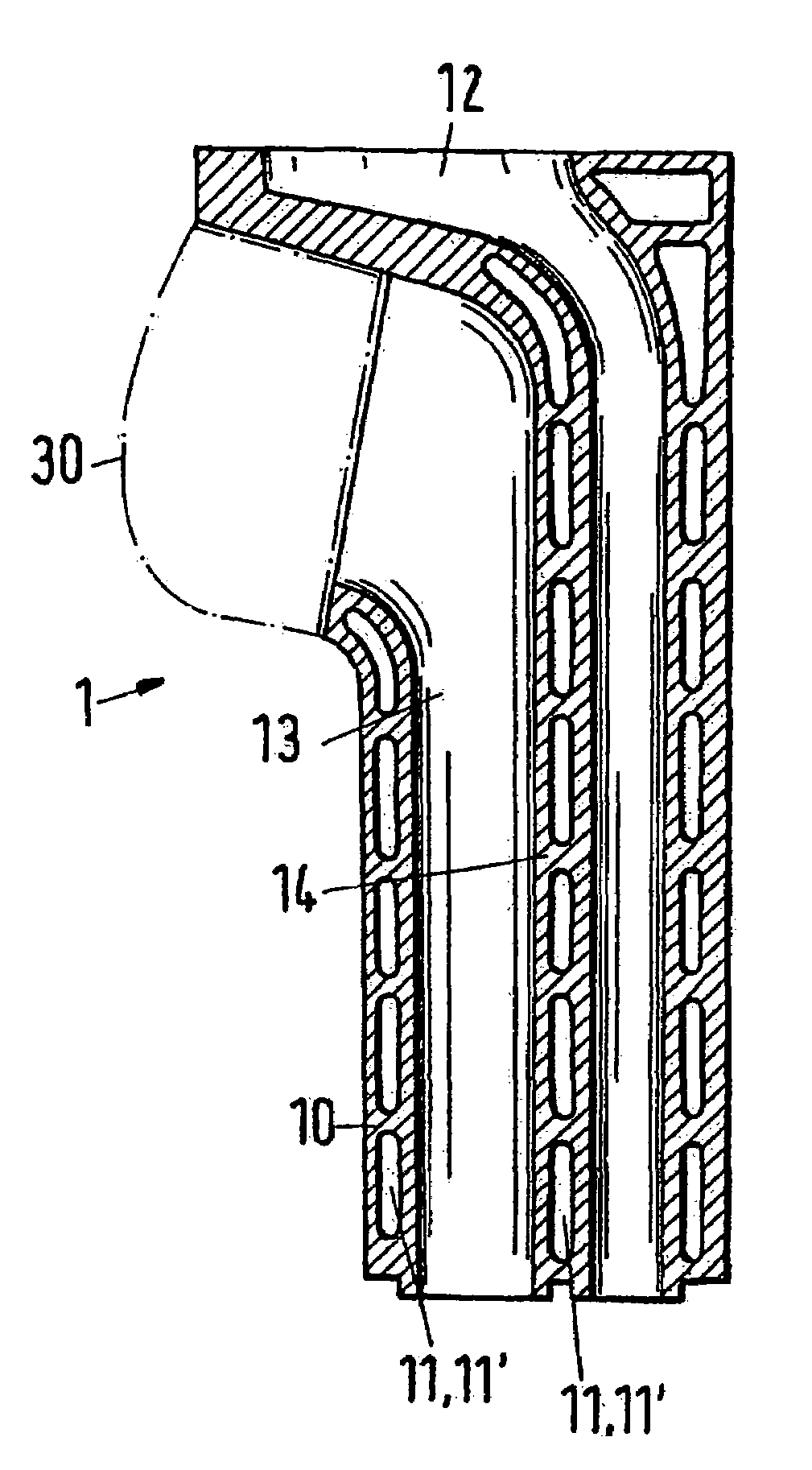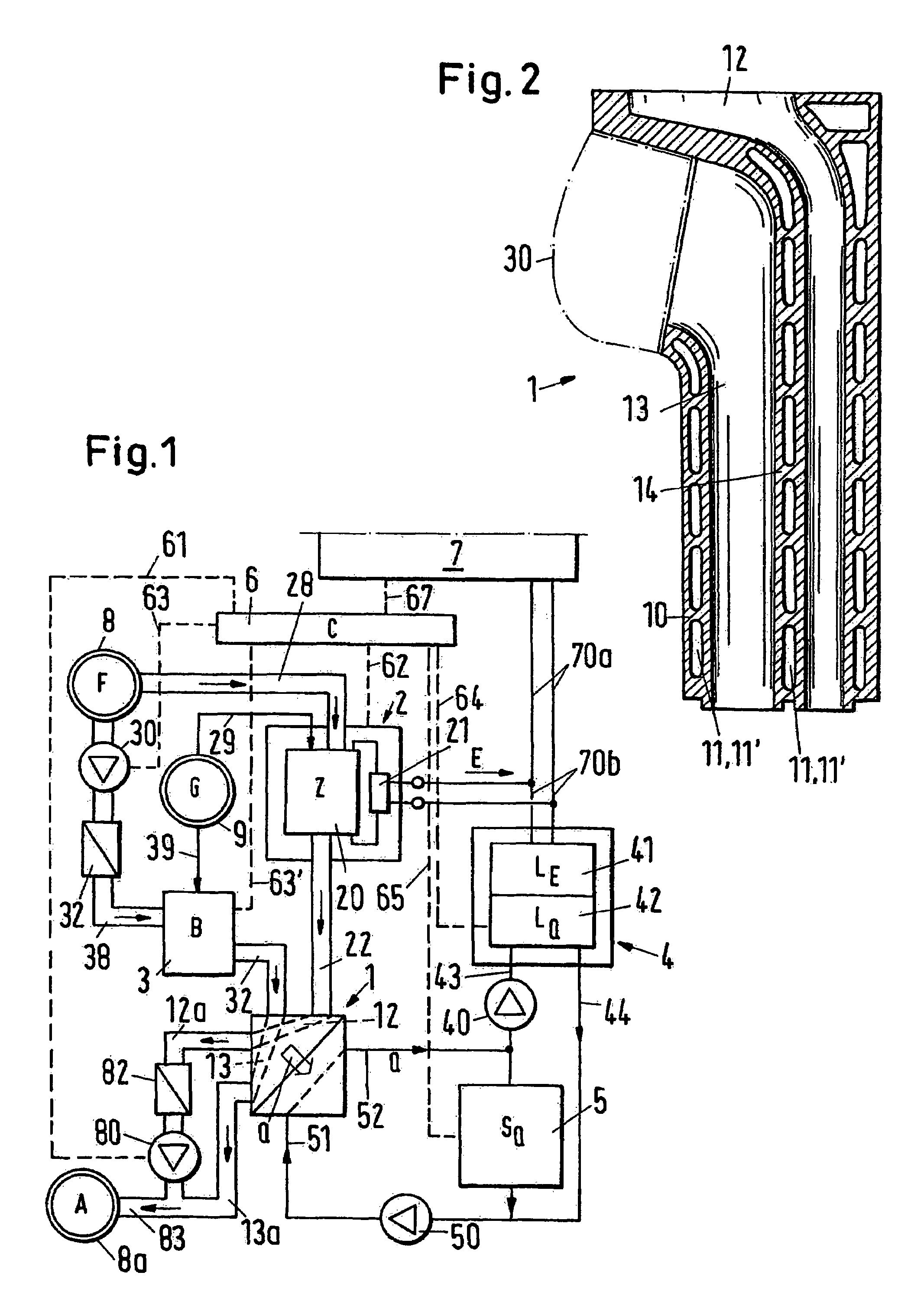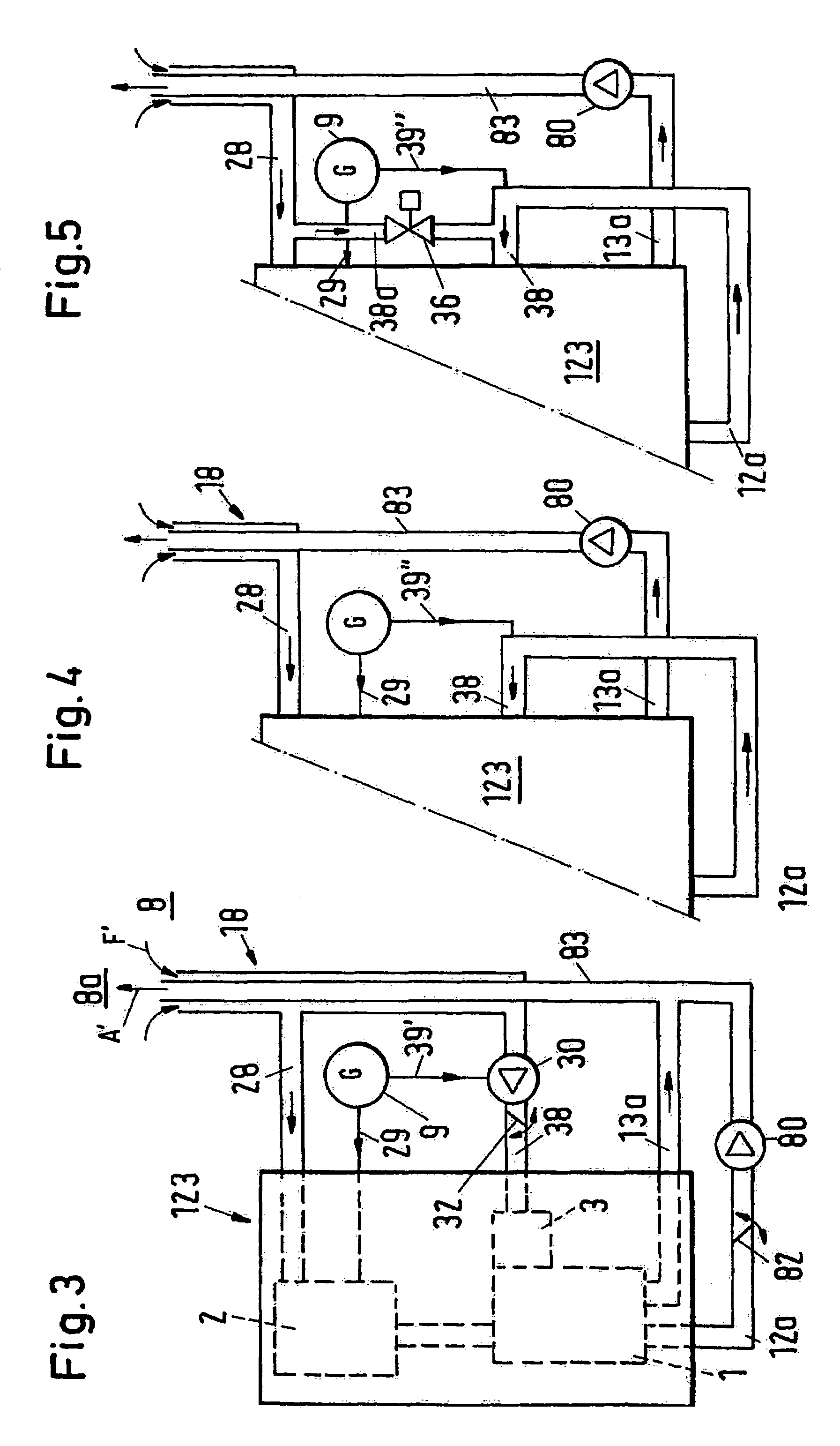Heat exchanger for a heating system with integrated fuel cells for the production of electricity
a technology of fuel cell and heat exchanger, which is applied in the direction of lighting and heating apparatus, sustainable manufacturing/processing, and final product manufacturing, etc., can solve the problems of current requirements of local energy users, superfluous, and expensiv
- Summary
- Abstract
- Description
- Claims
- Application Information
AI Technical Summary
Benefits of technology
Problems solved by technology
Method used
Image
Examples
Embodiment Construction
[0013]The heating system shown in FIG. 1 includes a heat exchanger 1 in accordance with the invention, a part system 2 with fuel cells Z, which are, for example, arranged in a stack-like unit 20, and an additional burner 3 which is designated with B in FIG. 1. Fresh air is fed from the environment, which is associated with the reference numeral 8, through a duct 28 and gaseous or gasified fuel G is fed from a source 9 through a line 29 to the fuel cells Z (the source 9 can be natural gas which is supplied through a public mains system). Fresh air F is likewise fed through a feed line 38 and fuel G through a feed line 39 to the additional burner 3. Exhaust gases which arise in the part unit 2 and in the additional burner 3 are fed to the heat exchanger 1 via ducts 22 and 32′ respectively. By means of the fuel cells Z electrical and thermal energy can be produced from the fuel G and / or thermal energy can be produced by means of the additional burner 3. After burning with exhaust air a...
PUM
| Property | Measurement | Unit |
|---|---|---|
| thermal energy | aaaaa | aaaaa |
| thermal conductivity | aaaaa | aaaaa |
| temperature | aaaaa | aaaaa |
Abstract
Description
Claims
Application Information
 Login to View More
Login to View More - R&D
- Intellectual Property
- Life Sciences
- Materials
- Tech Scout
- Unparalleled Data Quality
- Higher Quality Content
- 60% Fewer Hallucinations
Browse by: Latest US Patents, China's latest patents, Technical Efficacy Thesaurus, Application Domain, Technology Topic, Popular Technical Reports.
© 2025 PatSnap. All rights reserved.Legal|Privacy policy|Modern Slavery Act Transparency Statement|Sitemap|About US| Contact US: help@patsnap.com



